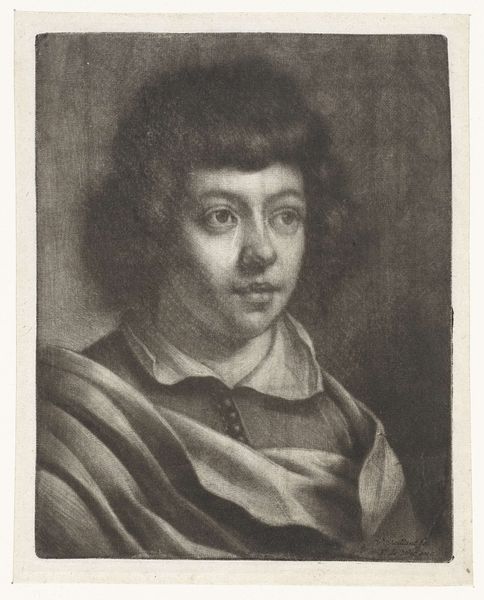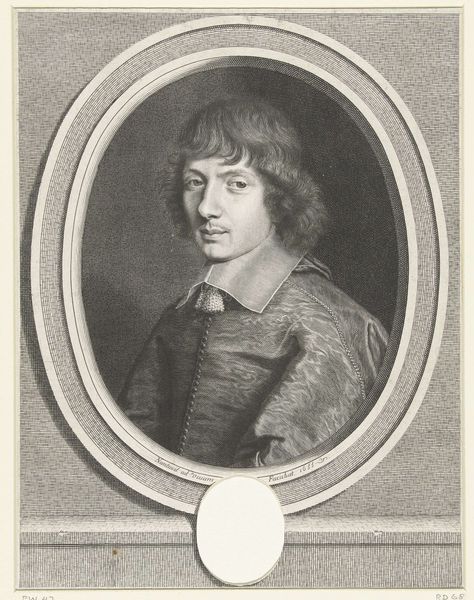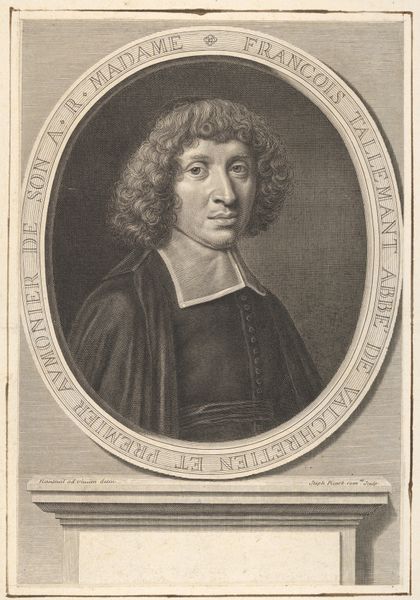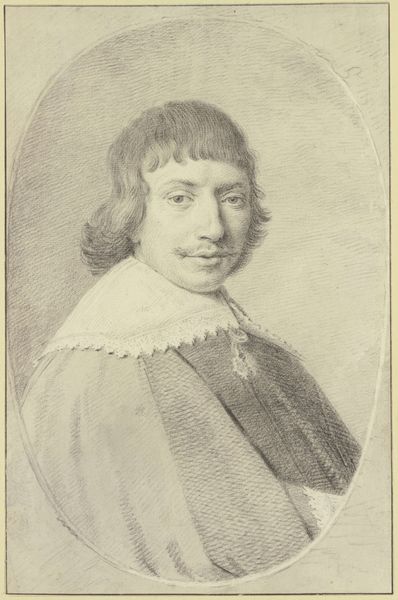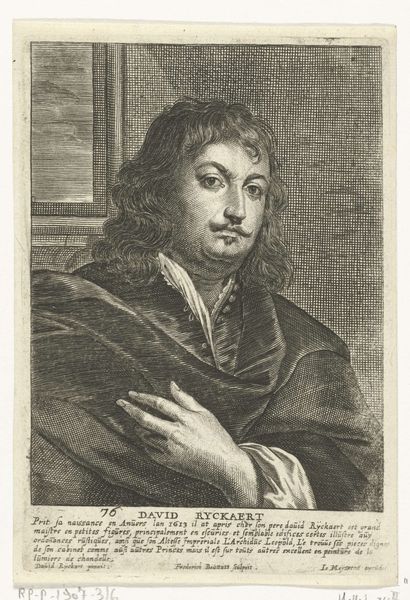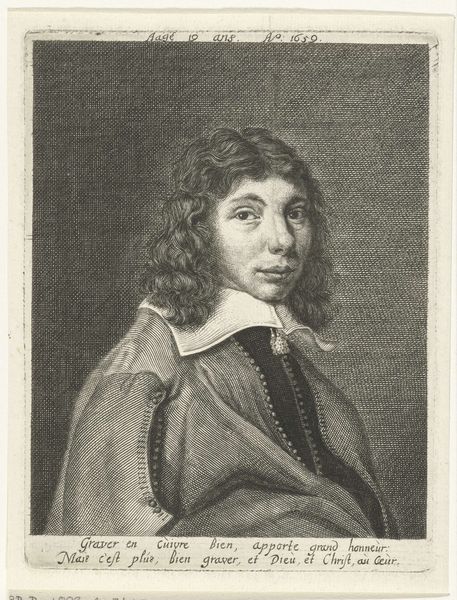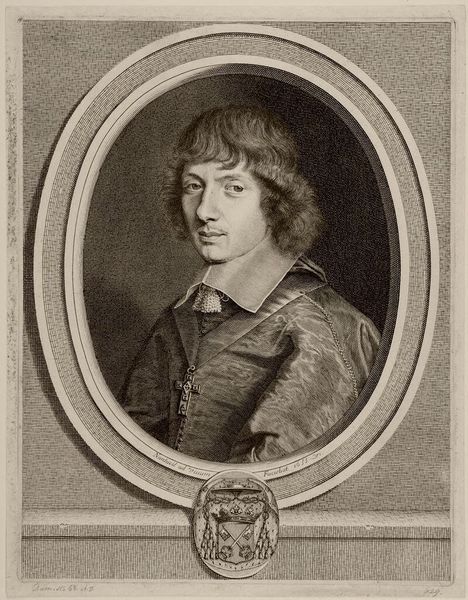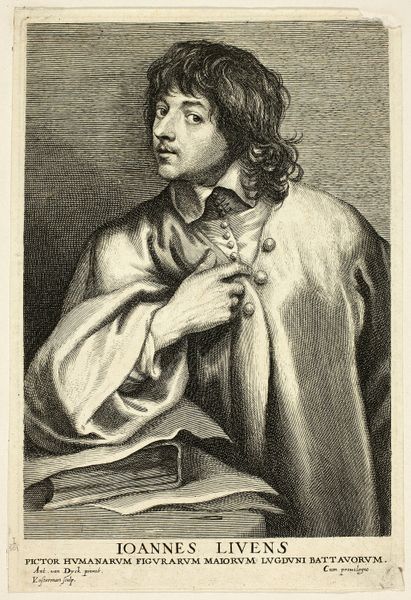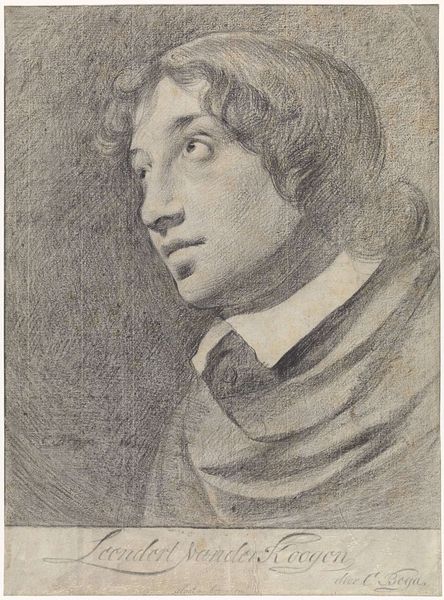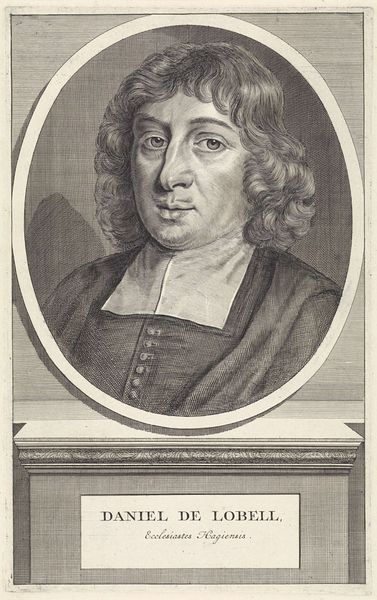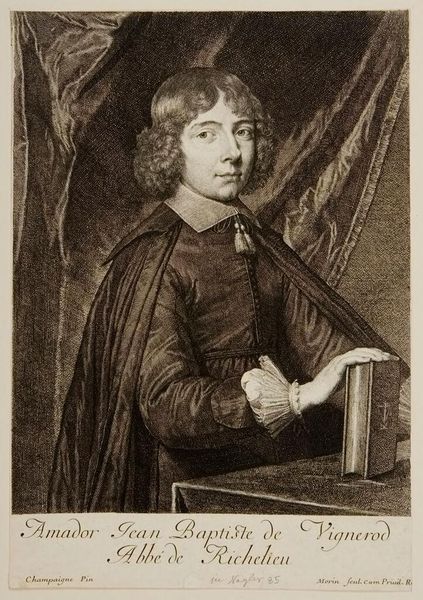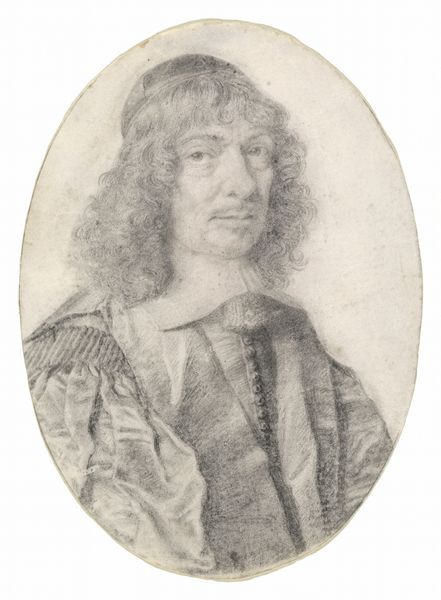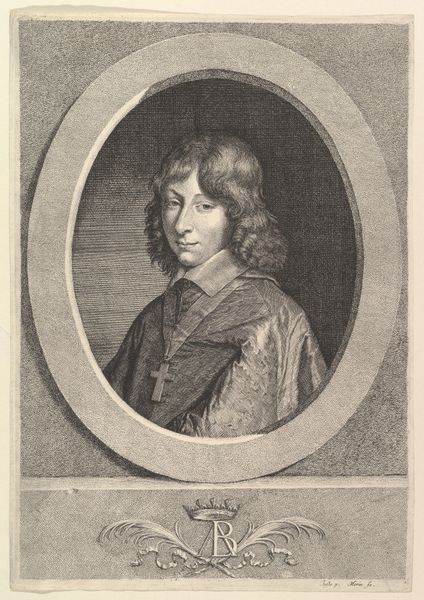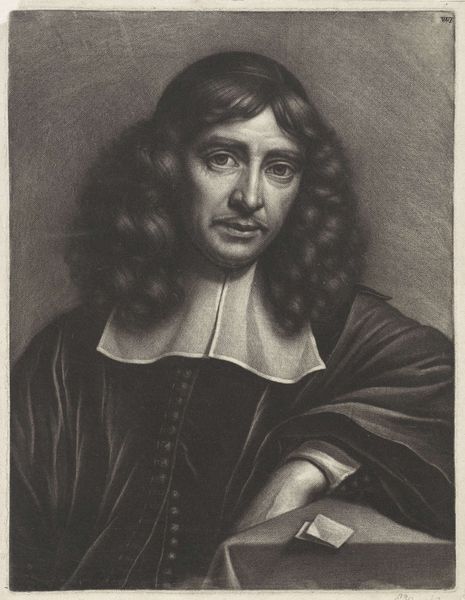
drawing, intaglio, graphite
#
portrait
#
drawing
#
baroque
#
portrait image
#
intaglio
#
charcoal drawing
#
portrait reference
#
framed image
#
graphite
#
animal drawing portrait
#
portrait drawing
#
facial portrait
#
portrait art
#
fine art portrait
#
celebrity portrait
Dimensions: height 176 mm, width 140 mm
Copyright: Rijks Museum: Open Domain
Curator: The Rijksmuseum holds this striking intaglio print, entitled "Jongen met een gevouwen kraag," or "Young Boy with a Folded Collar" created by Wallerant Vaillant sometime between 1658 and 1677. Editor: There's an intriguing melancholic aura about it, wouldn’t you agree? The soft gradients created with graphite and charcoal seem to veil the boy in a contemplative mood. Curator: Vaillant worked at a fascinating moment when printmaking was shifting from reproductive to original art. As such, this work has been interpreted by art historians in relation to class and education. This intaglio allows wider audiences to access portraiture, previously enjoyed by nobility, giving ordinary individuals insight into the fashions, trends, and culture of elites during the baroque. Editor: That's interesting in that context; I'm seeing something in his averted gaze. He appears disconnected. This portrayal, which some might interpret as simply capturing youthfulness, invites me to think about precarity within the construct of societal expectations around boyhood. How can this representation challenge historical portrayals of masculinity? Curator: Well, it's not necessarily an attempt at subversion, although your reading is compelling. He doesn’t overtly challenge norms, but by democratizing access to such imagery, the artist could inadvertently influence cultural attitudes, especially regarding representations of young men. What I find interesting is how such drawings reflect larger shifts within the art market. Printmakers offered options for a broader segment of society to acquire art that signaled belonging and cultivated personal and national identities. Editor: Perhaps by portraying a youth whose very presence and seeming introspection contrasts the overt bravado often depicted in aristocratic portraits. It disrupts the notion of a singular, performative masculinity tied solely to power and wealth. His pensiveness becomes, in effect, a form of subtle critique of traditional ideals. Curator: Perhaps, but in thinking of prints, one also has to consider Vaillant's business practices. This likely served as a model in his workshop and perhaps later sold as a single image. As we reconsider and expand definitions of masculinity today, it makes these images culturally valuable to analyze. Editor: Absolutely, seeing his depiction refracted through today's critical lens allows for a potent discussion about evolving concepts of self and identity that stretch across time.
Comments
No comments
Be the first to comment and join the conversation on the ultimate creative platform.
